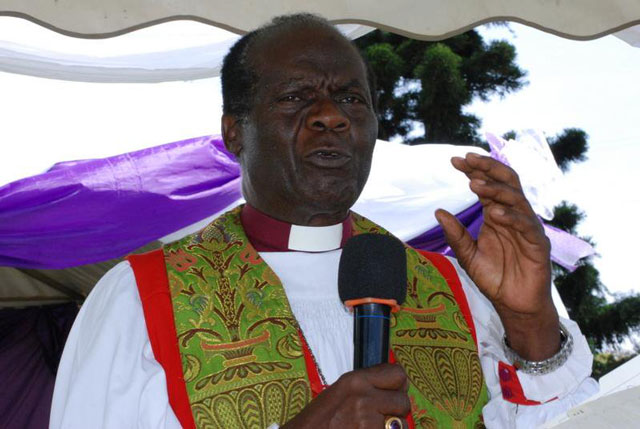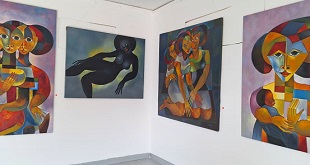
Kampala, Uganda | ANDREW S. KAGGWA | Ordinary people think merely of spending time. Great people think of using it. Livingstone Mpalanyi Nkoyoyo never relied on any such sage sayings, but the late Archbishop Emeritus of the Anglican Church of Uganda, who died on Jan. 05 of pneumonia, lived his life like someone with a lot to do in a short time. He often was to be heard exhorting his congregation to value time. “Buli ky’okola, kola mangu,” he would say in his native Luganda, meaning `whatever you are doing, do it hastily’. It also made him lead a purposeful life.
Before his death, Nkoyoyo had earlier undergone treatment for cancer of the throat at St. Mary’s Hospital, Paddington London in England where he spent six months between December 2016 and June 2017.
Born in 1938 colonial Uganda, Nkoyoyo – as a child of Buganda Kingdom’s chief Erisa Wamala Nkoyoyo and Naume Nakintu of Busimbi, Singo in Mityana District – he could have followed the usual path; studying at prestigious schools like King’s College Budo, before moving on to a foreign university like Cambridge in the UK. But Nkoyoyo chose a more practical path.
Instead, as he once explained in an interview with Bukedde, a Luganda newspaper; since he admired his father’s car so much, he decided that he would be its caretaker. So he went into motor vehicle mechanics.
He also studied at Mpenja Primary School in Gomba District, then Aggrey Memorial School in Wakiso District, and later Mityana Junior Secondary School. He was a highly educated man by the standards of the 1950s in Uganda where only a handful of people attended formal school. But it barely qualified him to be Archbishop. That came later, but with similar purposefulness.
It is not clear how deeply immersed into the church Nkoyoyo’s father was. But his grandfather, the late Eriya Kagiri, was an early convert to Christianity.
Nkoyoyo often spoke about how his grandfather, who was a muwereza (page) in Kabaka Mwanga’s palace in 1886, converted to Christianity and bravely confessed his faith to Mwanga at the height of Christian killings.
Nkoyoyo often described how the king confronted Kagiri about it.
“Why do you defy me?” the Kabaka reportedly asked Kagiri.
“I have learnt about Jesus and find him attractive. His religion appeals to me and I joined it,” Kagiri replied. The words appeared to seal his fate, and he was roped together with other pages who had converted to Christianity and marched to present day Namugongo Martyrs Shrine for execution. But just moments to Kagiri’s execution, Mwanga ordered his pardon. Apparently, Mwanga was fond of Kagiri because of his loyalty and exemplary service in the palace. Despite the pardon, Mwanga expelled Kagiri from the palace. But, as was the practice then, the Kabaka appointed Kagiri chief in Matale-Kyaggwe in the present day Lugazi area. Later, Nkoyoyo’s father too was a Gombolola (sub-county) chief during the reign of Mwanga’s grandson; the late Buganda Kabaka Edward Muteesa II in the immediate pre-independence period.
From garage to church
From his grandfather, Nkoyoyo inherited his burly six foot figure and hardworking habits. His grandfather had been nicknamed musigula; the one who removes tough obstacles. But Nkoyoyo’s deep immersion into Christianity came when he was barely past teen age.
“My life changed in 1959 during a youth prayer gathering after listening to preaching from the late renowned evangelical preacher the late Festo Kivengere and I became saved,”Nkoyoyo once said in an interview.
Ever purposeful, he joined Namugongo Anglican Seminary and was ordained a priest on June 3, 1969. That is another date that links the late archbishop with Namugongo where the annual Martyrs Day is marked on June 03.
 The Independent Uganda: You get the Truth we Pay the Price
The Independent Uganda: You get the Truth we Pay the Price


